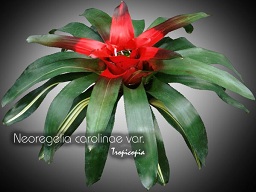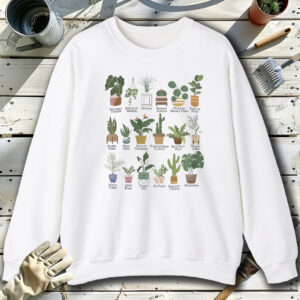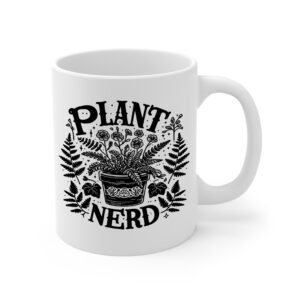Table of contents
Neoregelia carolinae var.

Latin Name: Neoregelia carolinae var.
Category: Bromeliad
Family: Bromeliaceae
Origin: Cultivar
Climate: Tropical
Growing Zones: 11-10
Care Instructions
The Neoregelia carolinae var. (Neoregelia carolinae var.) is a tropical plant that originates from Cultivar. This bromeliad plant belongs to the Bromeliaceae family and is well-suited for growing in USDA zones 11-10.
Complete Care Guide for Neoregelia carolinae var.
Watering Requirements
Neoregelia carolinae var., commonly known as the bromeliad, has specific watering needs that are crucial for its health. This plant thrives in a humid environment, so it is essential to keep the central rosette filled with water. Water the plant thoroughly, allowing excess to drain out, and refill the rosette as needed. During the growing season (spring and summer), water the plant every 1-2 weeks, ensuring that the soil remains moist but not soggy. In the winter months, reduce watering frequency, allowing the soil to dry out slightly between waterings. Always use distilled or rainwater, as bromeliads are sensitive to chemicals found in tap water.
Light Conditions
Neoregelia carolinae var. prefers bright, indirect light to thrive. Direct sunlight can scorch the leaves, leading to unsightly brown tips and overall decline in health. Ideally, place your bromeliad near a window with filtered light or in a well-lit room where it can receive bright, indirect sunlight for several hours a day. If you notice the leaves losing their vibrant color or becoming elongated, it may be a sign that the plant is not receiving enough light. Conversely, if the leaves are turning brown or crispy, it may be getting too much direct sunlight. Adjust the plant’s location accordingly to maintain optimal light conditions.
Soil Preferences
For Neoregelia carolinae var., the right soil mix is vital for healthy growth. This bromeliad prefers a well-draining potting mix that retains some moisture without becoming waterlogged. A mixture of orchid bark, peat moss, and perlite is ideal, as it provides the necessary aeration and drainage. When repotting, choose a pot with drainage holes to prevent root rot. Fertilization should be done sparingly; use a balanced, water-soluble fertilizer diluted to half strength every 4-6 weeks during the growing season. Avoid fertilizing in the winter months when the plant is dormant.
Pests and Diseases
While Neoregelia carolinae var. is relatively resilient, it can still be susceptible to pests such as mealybugs, aphids, and spider mites. Regularly inspect the undersides of leaves and the central rosette for any signs of infestation. If you notice pests, treat the plant with insecticidal soap or neem oil, ensuring thorough coverage. Additionally, watch for signs of fungal diseases, which can occur in overly moist conditions. If you see any black spots or mold, reduce watering and improve air circulation around the plant. Keeping the foliage dry and ensuring good airflow can help prevent these issues.
Special Care Tips
To maintain the health and beauty of your Neoregelia carolinae var., consider the following special care tips. First, ensure that the plant is not exposed to cold drafts or extreme temperature fluctuations, as it prefers temperatures between 65°F and 85°F (18°C to 29°C). Additionally, regular misting can help maintain humidity levels, especially in dry indoor environments. If you notice the leaves becoming dull, a gentle wipe with a damp cloth can help remove dust and enhance their natural shine. Finally, consider propagating your bromeliad by removing offsets (pups) that grow at the base of the plant once they are a few inches tall. This not only helps control the size of the plant but also allows you to expand your collection or share with friends.








